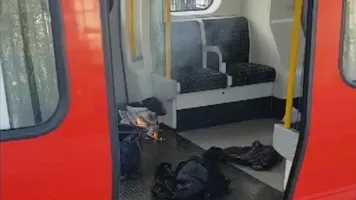Why it Matters in Modern Terrorist Threats
Terrorism in Today’s World
Terrorism today is less about grand-scale plots and more about quick, low-cost, high-impact attacks. Knife assaults, vehicle rammings, homemade explosives, and lone actors inspired online are common.
For Security Control Room (SCR) Operators, this means the challenge is not only responding when something happens, but spotting the early signals that often look small or routine.
👉 UK’s CONTEST Counter-Terrorism Strategy reminds us that most attacks involve hostile reconnaissance first, where suspects study a site before acting. Operators are best placed to spot this.
Why the Control Room is Critical
The SCR is more than a room full of monitors, it is a command hub where lives are protected.
SIA standards require operators to act with vigilance and professionalism.
ACS frameworks emphasise resilience, communication, and clear escalation.
BSI/NSI standards demand accurate evidence handling and system reliability.
When the control room falters, the entire security chain is weakened.
Real-World Example: Parsons Green Tube Attack (2017)
In London, an improvised explosive device partially detonated on a District Line train at Parsons Green station. CCTV later showed the suspect carrying the device through multiple transport hubs in the days before.
The missed opportunity: behaviour such as loitering, carrying an unusually large bag during rush hour, and returning to the same areas went unchallenged. For SCR operators, the lesson is powerful: terrorists almost always test their routes and routines first, and you may be the only person who spots it.

Common Warning Signs of Pre-Attack Behaviour
Repeated visits to restricted or vulnerable areas.
Unnatural interest in CCTV, patrols, or exits.
Leaving bags or objects unattended.
Nervous body language: pacing, scanning, avoiding eye contact.
Vehicles left in unusual places for long periods.
Attempting to test reactions (alarms, questions, pushing doors).
Tip: Patterns matter. A single action may be harmless, but repeated patterns must always be logged and escalated.
Scenario: The Fire Exit Watcher
On CCTV, you notice someone return to the same fire exit on three separate evenings, each time pulling the handle, then quickly walking away. Security patrols log it as “checked, no breach.”
Should this be logged as suspicious behaviour?
Should it be escalated to your supervisor?
What if that door becomes the chosen entry point in an attack?
Tip: Escalation early can shut down hostile reconnaissance before it escalates.
The Domino Effect of Delay
Seconds matter. In the world of terrorism, hesitation is often the hidden accomplice. A control room that pauses too long, second-guesses itself, or waits for “certainty” before escalating can give attackers exactly what they need time.
Delays don’t just mean late responses, they create a domino effect: panic spreads faster, evacuation routes clog up, and responders arrive into chaos instead of order.
Example: In one European train station attack, CCTV captured suspects leaving a car parked awkwardly near an entrance. Operators assumed it was “just abandoned” and made no escalation. Hours later, the device detonated, injuring dozens. The cameras had the evidence, but the delay turned a preventable risk into a tragedy.
Tip for Operators:
Treat suspicious behaviour as urgent, not background noise.
If in doubt, escalate, you won’t be criticised for acting too quickly, but you will be held accountable for doing nothing.
Remember: five minutes of silence in the control room can cost lives on the ground.
Technology is a Tool, Not a Crutch
Today’s control rooms are packed with technology: CCTV walls, AI motion analytics, vehicle recognition systems, and alarms. These are powerful tools, but tools alone cannot stop an attack. It is human vigilance, pattern recognition, and intuition that turn data into action.
Technology can also be fooled. AI may miss nervous pacing, a camera may fail to pick up a concealed object, and alarms can be deliberately set off to test security response times.
Example: In a foiled UK stadium plot, it wasn’t the AI alert that flagged a problem, it was an operator who noticed the same individual filming barriers at the same time each day. Machines logged “no incident,” but human vigilance recognised hostile reconnaissance.
Tip for Operators:
Use technology to assist, not replace, your judgment.
Stay alert to behaviours, not just system alerts.
Ask yourself: “Would this look suspicious to me if I were standing there in person?” If yes, log it.
Preparing for the Aftermath
When an incident happens, the role of an SCR Operator doesn’t stop once alarms sound or police arrive. In fact, your responsibilities increase. The aftermath is about protecting evidence, supporting responders, and ensuring accountability.
Evidence gathered by operators is often the difference between convictions and acquittals in terrorism trials. CCTV footage, access control logs, and your radio communications all become vital records. The way you secure and preserve them directly impacts justice.
Example: After the Borough Market attack in London, operator logs proved crucial in piecing together attacker movements. They showed how attackers entered the site, regrouped, and moved between victims. That data shaped both the police investigation and public safety reviews.
Tip for Operators:
Immediately secure CCTV clips, prevent auto-deletion or overwriting.
Time-stamp and label logs clearly, they are legal records.
Provide emergency services with a live feed of the scene where possible.
Stay engaged for debriefs, your observations can influence national counter-terror training.
The Watchful Protector
Terrorists thrive on gaps, the corner of a camera that no one checks, the routine that makes staff predictable, the hesitation that buys them seconds. Your role as an SCR Operator is to close those gaps. You are the one who sees what others miss, who connects patterns, and who ensures threats are stopped before they strike.
Every log you complete, every suspicious behaviour you flag, every escalation you make, is not just “admin work,” it is part of a living shield that protects real people in real time. You may sit behind screens, but your vigilance stands on the frontline.
Takeaway: Be alert, be decisive, and trust the standards you are trained to uphold. Your eyes and actions are not in the background, they are the first line of defence against those who seek to harm.

